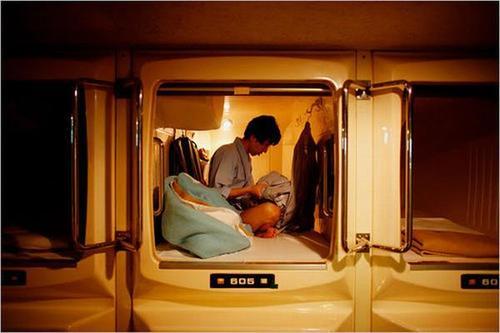How Small Can a Living Space Get?
As a nation obsessed with making things as small as possible, the Shinjuku Capsule Hotel in Tokyo seems a natural development for the Japanese. Instead of renting a room with a TV, en-suite and double bed, this hotel offers tiny capsules, measuring only 2 metres by 1.5 metres.
Each pod contains a light, a small TV with headphones, and basic linen. Any other possessions, such as clothing and toiletries, must be kept in an external locker.
These capsules were originally intended for businessmen who missed the last train home to crash for a night, but as Japan experiences it's worst recession since World War II, their purpose has begun to evolve.
Many of the freshly unemployed have been forced to leave company housing, or are unable to pay their rent, inspiring the Shinjuku Hotel to offer discounts to those who choose to stay in their tiny hotel 'rooms' for a month or more. Now, 100 of their 300 capsules are rented by the month. The tiny living spaces can also be registered as a home address, making it easier to land job interviews.
This super-condensed urban living appears very similar to the future world explored in 'The Fifth Element', and it certainly makes you wonder how small a living space can get before it becomes unliveable.
Link to original post

